iPhone 1 vs iPhone 7 Plus: this is how far we've come in 10 years
A side-by-side comparison of Apple’s first and newest smartphone
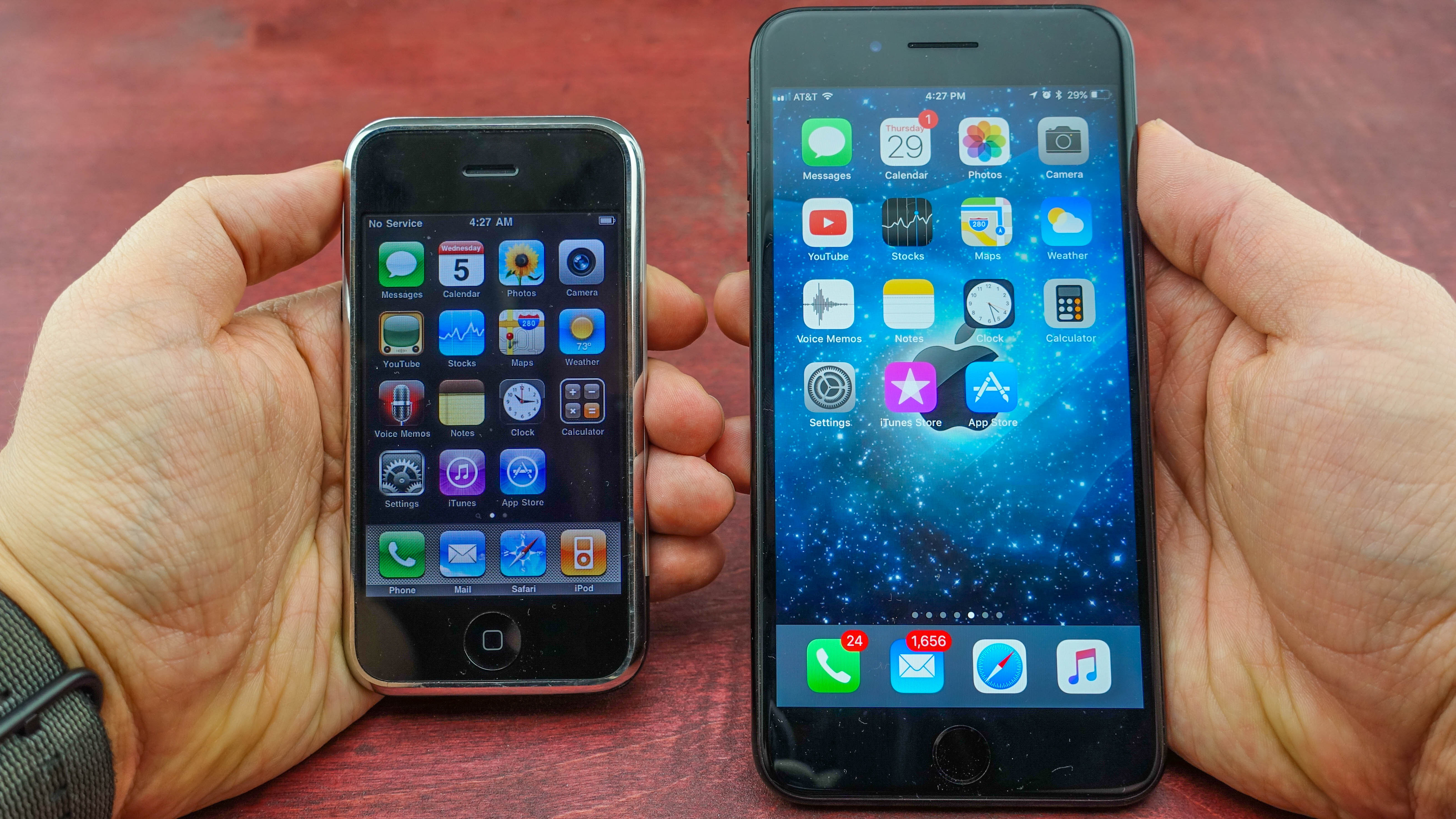
Introduction
The original iPhone is celebrating its 10th birthday, and what better way is there to mark this anniversary than to force it to hang out with its taller, more popular and overall better looking kid?
We decided to do an in-depth comparison of the iPhone 1 vs the iPhone 7 Plus running iOS 11, putting the two smartphones side-by-side. What's changed? In two words: a lot.
As we wait for the iPhone 8 (or whatever Apple will end up calling its next smartphone), let's see how far we've come in one decade.
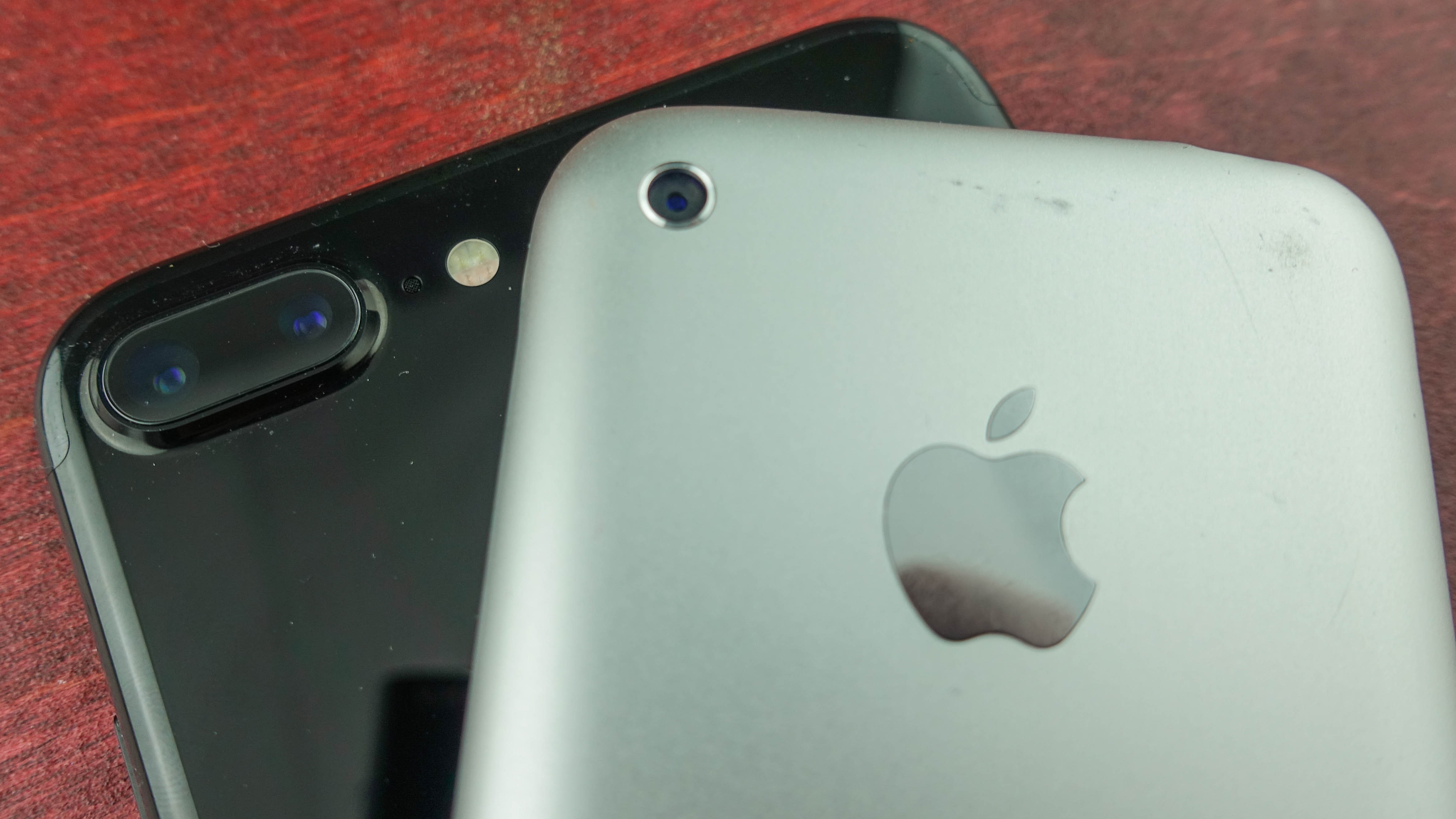
iPhone 1 vs iPhone 7 Plus camera
We have to start here because the camera has seen the biggest advancements of any iPhone feature. It's replaced buying a DSLR or compact camera for many people and paved the way for billion-dollar ideas like Instagram and Snapchat.
The original iPhone had a single 2MP camera on back, and that was pretty significant in 2007. It was superior to the standard 1.3MP camera on many flip phones and its touchscreen allowed you to better frame and review shots.
What's crazy? iPhone 1 doesn't have a front-facing camera, doesn't take video and doesn't let you can't tap to focus. It just takes low-resolution photos during the day and, at night, all you get is either dark nothingness or a blurry, bright blown-out mess. But this was still a big deal ten years ago.
Now? Now we're spoiled with three cameras on the iPhone 7 Plus, including an impressive dual-camera setup on back. Apple has also multiplied the level of detail and color correction in ten years and added a bokeh-rich Portrait Mode, Live Photos, and that all-important FaceTime camera. Yes, selfies (and selfie sticks) weren't a thing when the iPhone 1 launched.
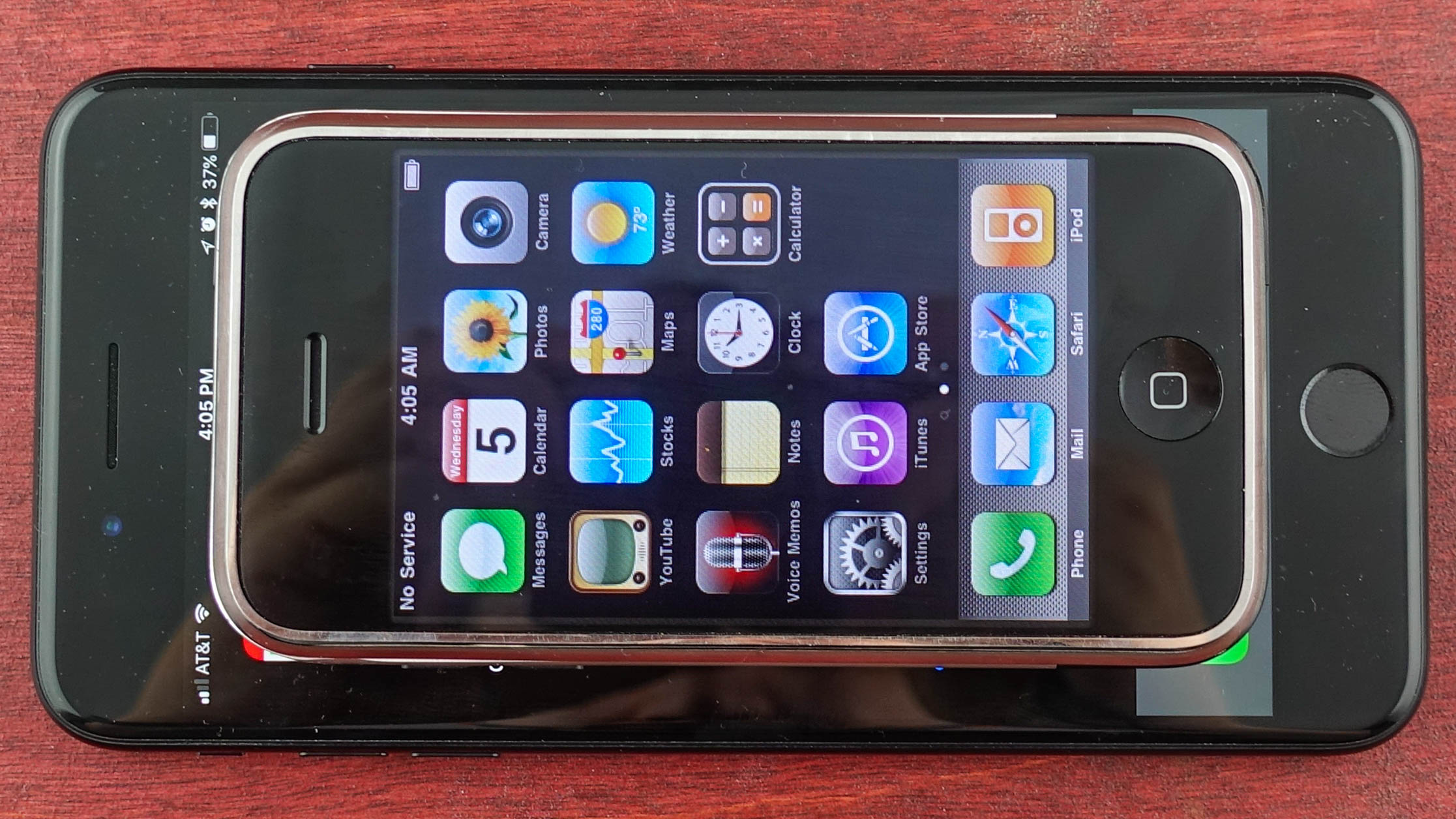
Screen
The iPhone 1 had a large, revolutionary 3.5-inch touchscreen, eschewing the physical keyboard popularized by BlackBerry in favor of an on-screen keyboard. That was controversial. Those who weren't wowed by this technology on June 29, 2007 seemed to be predicting an on-screen keyboard would never take off.
What's crazy? The iPhone 1 is so small that the entire phone fits within the perimeter of iPhone 7 Plus screen. That 3.5-inch display has a resolution of 320x480 pixels, and it packs in only 165 pixels per pinch. The revolution came, but it wasn't even Retina HD just yet.
Now? iPhone 7 Plus is massive by comparison thanks to a 5.5-inch, 3D-touch-touting display. It has a resolution of 1080 x 1920 pixels, about 401 pixels per inch and a significantly wider color gamut. It really contrasts with what looks like the 8-bit of smartphone displays.
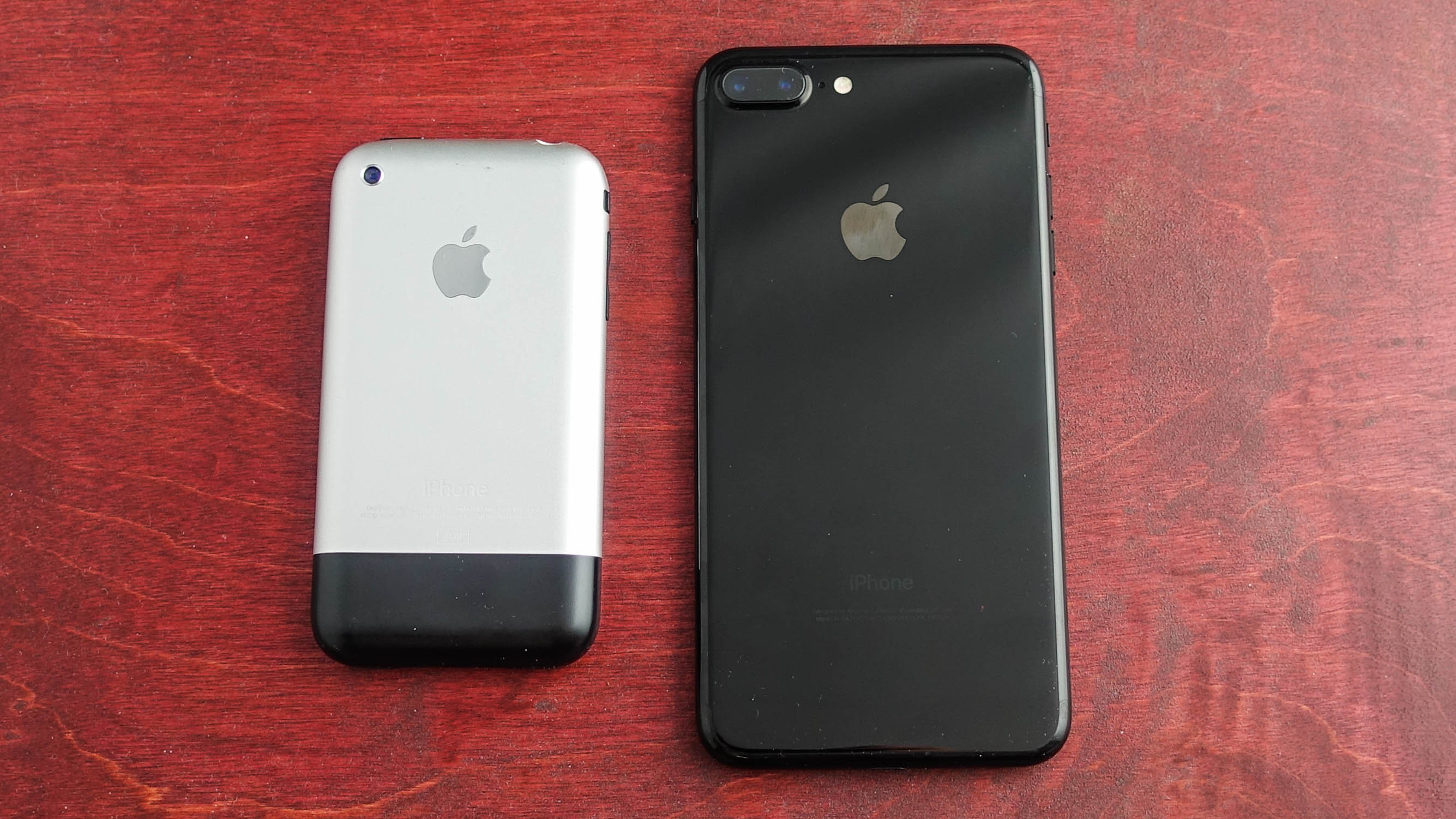
Size and build material
The iPhone 1 had a length and width of 115 x 61mm (4.53 x 2.40), big by 2007's standards. It also had a thick girth of 11.6mm (0.46 in) and was anything but a unibody phone. You, could, however, hold and operate it with one hand and fit in a skinny jeans pocket.
What's crazy? It's very slippery and fairly delicate – admittedly, we broke one during the making of this six-month-long feature. The iPhone 1 is an antique and should be treated as such. Our mistake.
Now? iPhone 7 Plus is obviously much bigger at 158.2 x 77.9mm (6.23 x 3.07 in), but the depth is noticeably slimmer: 7.3 mm (0.29 in). It may not fit in your pocket – and sadly our jeans have gotten skinnier in ten years. Luckily, the new iPhone is more durable, debuting water-resistance for the first time in 2016.
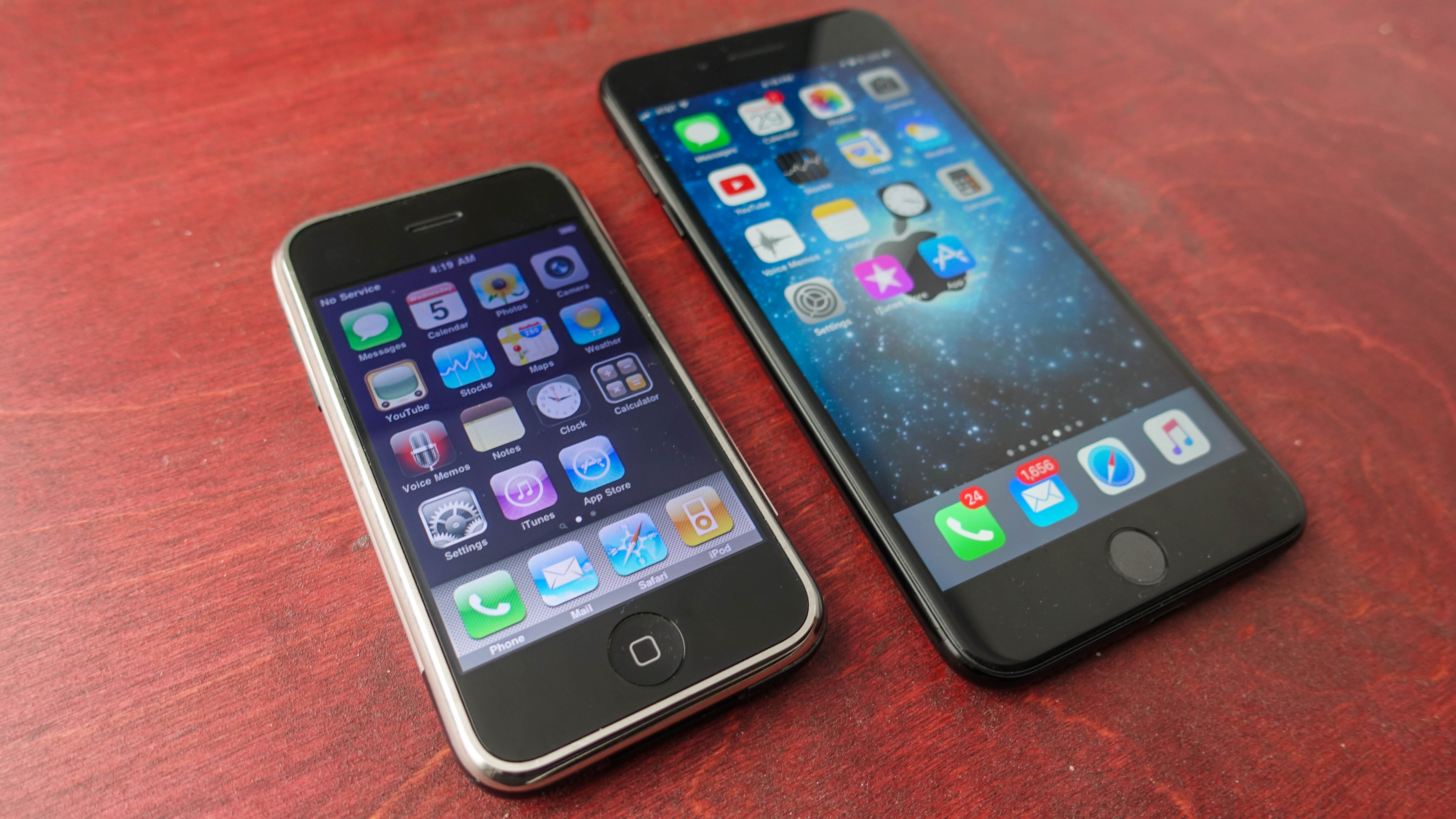
Apps
The iPhone 1 came with pre-installed apps, but Apple didn't launch its App Store until the iPhone 3G released a year next year. That meant you were stuck with 18 apps and the settings menu for 19 tiles total on the single homepage.
What's crazy? There's no Control Center or notifications shade. You certainly can't delete apps, but do you remember a time before app folders? Those didn't launch until iOS 4.
Now? 500 apps launched on the iPhone a year later thanks to the advent of the App Store via a software upgrade called iPhone OS 2 (the predecessor to iOS). Now, as of iOS 11, we have more 2.2 million apps and Apple has had 130 billion downloads. At WWDC 2017, Apple announced that the App Store has generated $70 billion in revenue for developers.
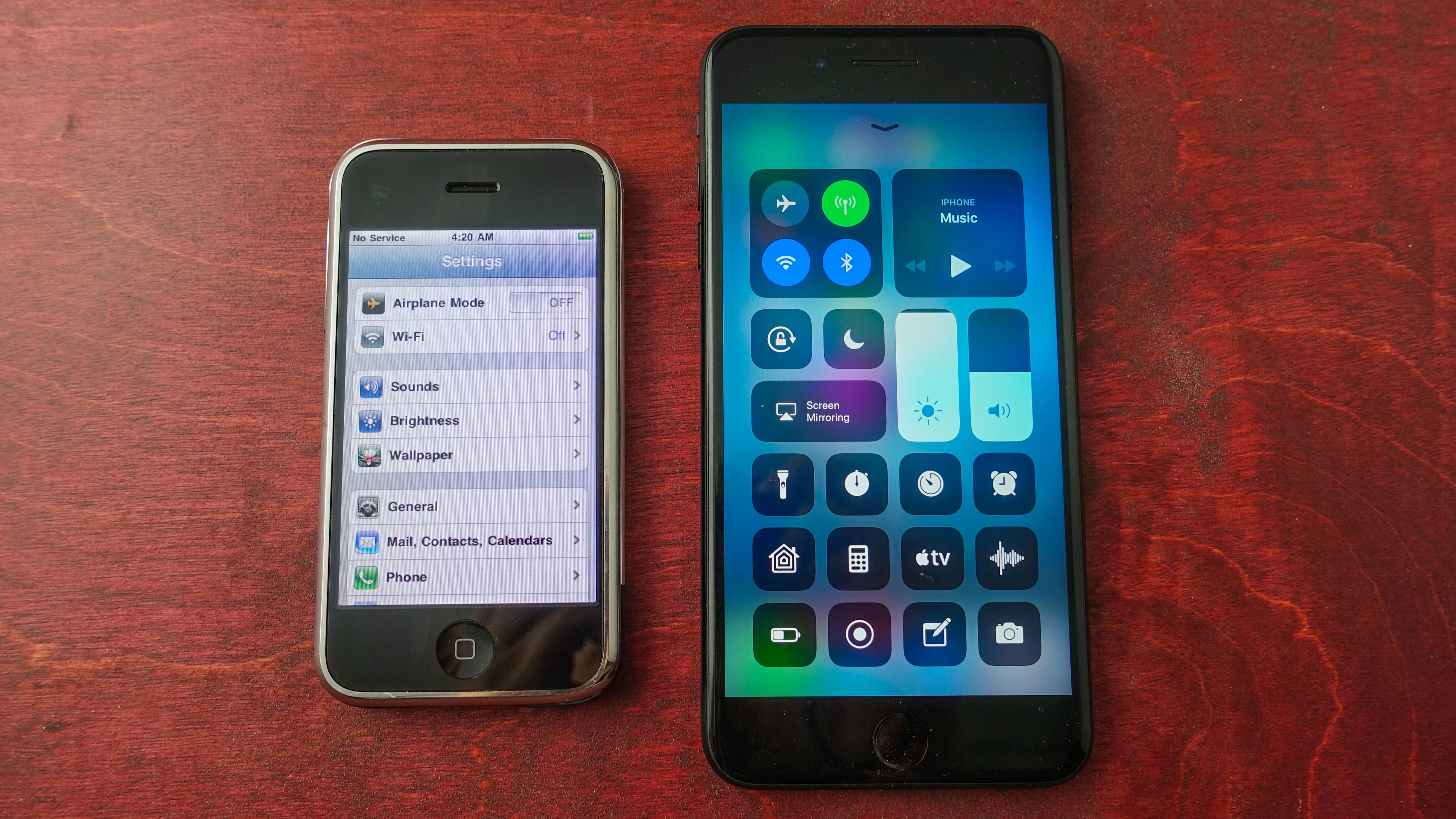
Software, settings and menus
The iPhone 1 could make phone calls, send text message and connect to Wi-Fi so you could email people and surf the web. All of this was considered a feature suite in 2017. Before, phones used to break up the mobile web into little chunks with scrollable vertical and horizontal bars. Safari gave us our first taste of the real mobile web. Wallpapers were customizable on the lockscreen, where Apple's 'Slide to unlock' mechanic reduced butt dials dramatically.
What's crazy? Notice anything? There's no Bluetooth, nevermind Night Shift, Do Not Disturb and low-power modes, all considered essential in 2017. Also, you weren't able to change the wallpaper on the device itself. Only the lockscreen. What a world we lived in.
Now? Jumping from an iPhone 1 to an iPhone 7 Plus with iOS 11 seems so much more complicated. But over the course of ten years, we've grown with all of the system changes and wouldn't be able to function without swiping up from the bottom to access Control Center. The only thing we miss today is the satisfaction of 'Slide to unlock.'
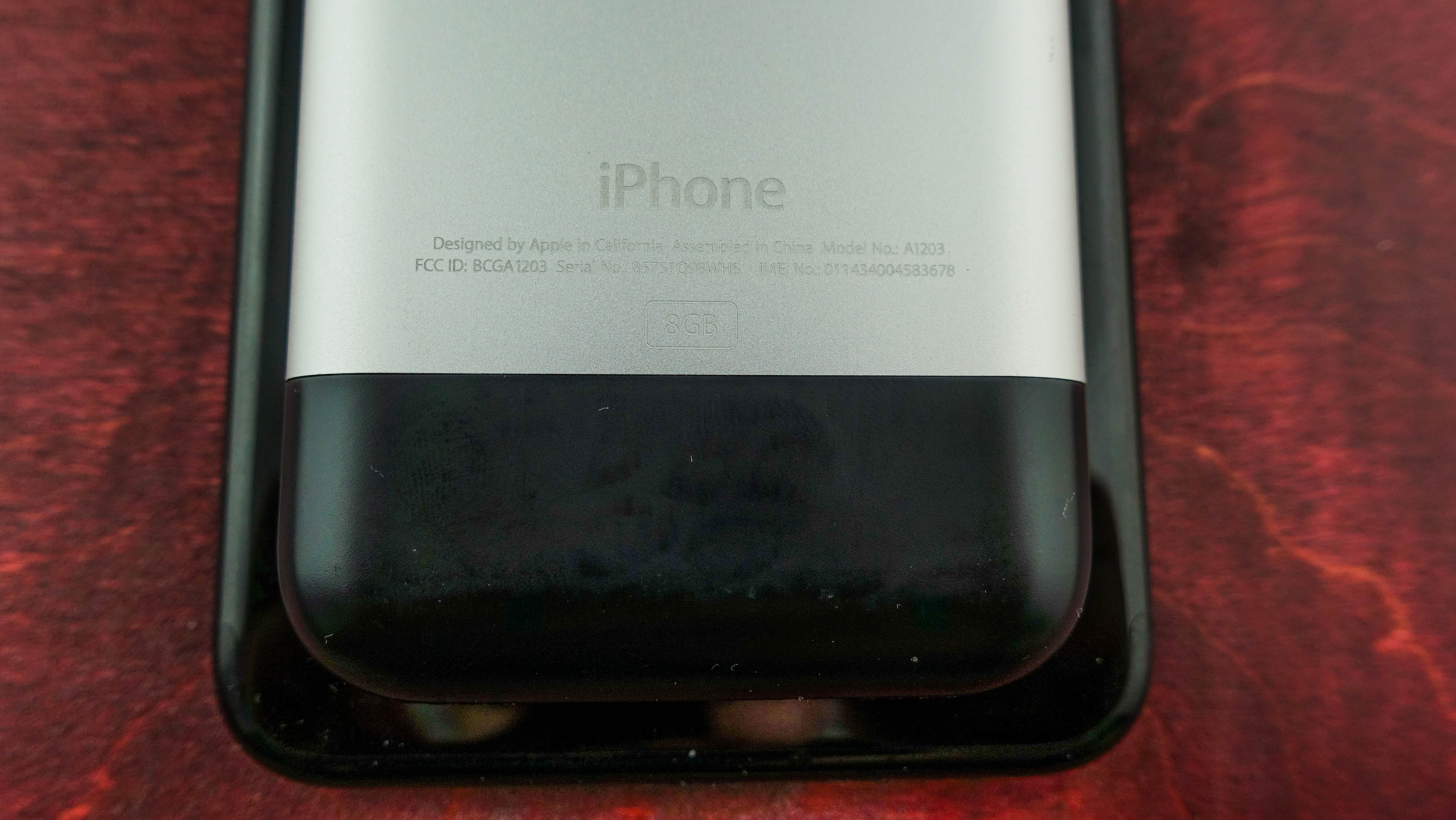
Specs
Apple didn't need to tout the iPhone specs for the first two years because the iPhone 1 and iPhone 3G had limited processing power and, frankly, didn't need to high-end performance for the fledgling App Store the came in year two. But the iPhone 1 was still a capable little machine, with a 412MB processor and 128MB of RAM.
What's crazy? Apple's entry-level iPhone 1 had just 4GB internal storage – and you thought 16GB was bad. Of course, we didn't have much content to use up that space in 2007. The App Store was still a year off and the low-resolution photos didn't take up a lot of room. But, just in case, Apple also had 8GB and 16GB models.
Now? iPhone 7 Plus claims speed records thanks to its Apple A10 Fusion chipset that has 2.34GHz quad-core processor and 3GB of RAM. It's thousands of times faster than the computer within the Apollo spaceship – the one that landed on the moon – and the technology now fits in your pocket.
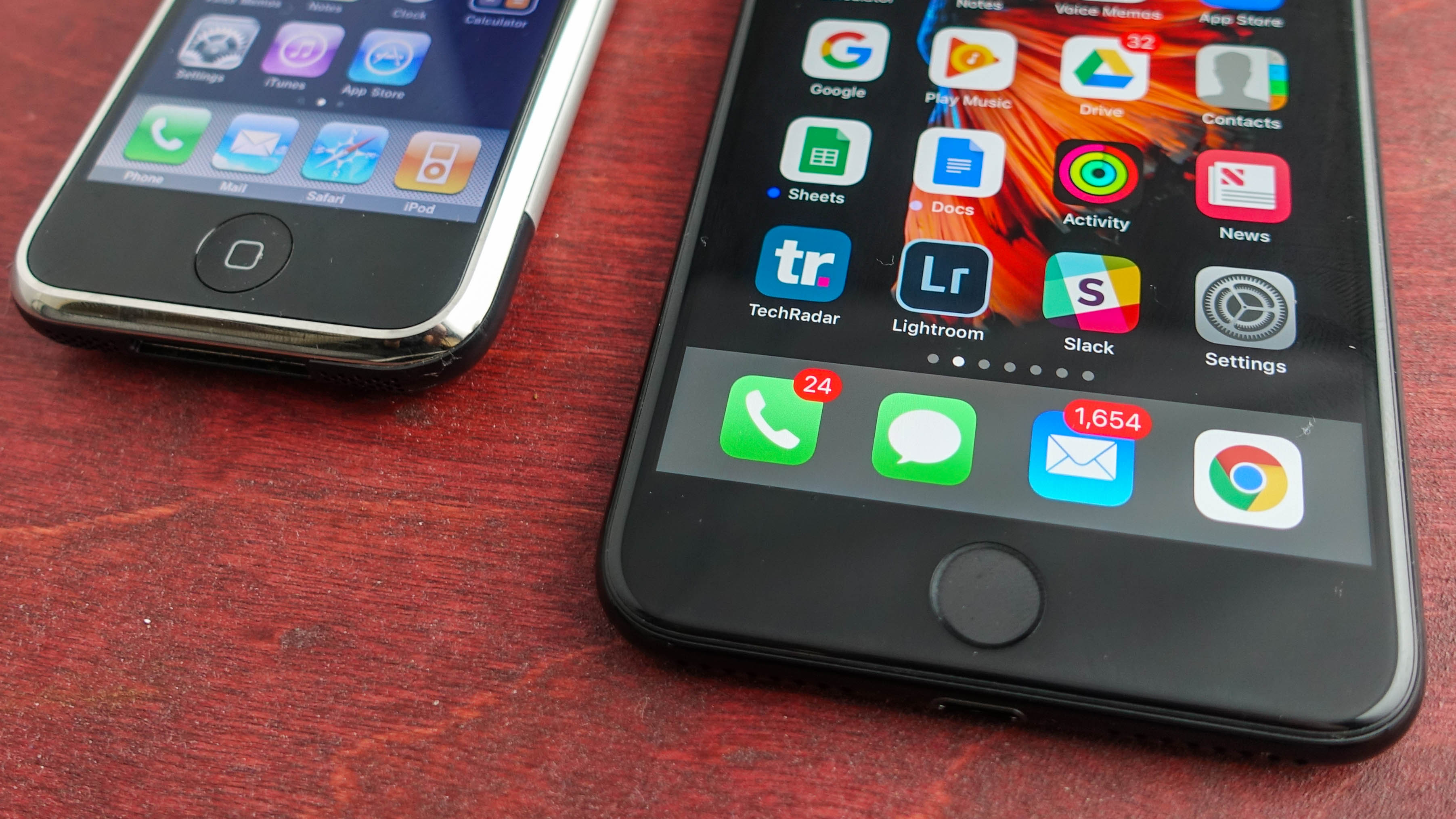
Home button
The iPhone 1 debuted Apple's iconic home button and what was unique about this is that there were no physical buttons on the front of the device. This was foreign territory for avid BlackBerry fans. It pressed in like a normal button and lit up the screen when the phone was asleep, or returned you to the home menu when you were in an app.
What's crazy: Holding down the home button does... absolutely nothing. Siri didn't launch until the iPhone 4S came out. Double pressing it, however, did lead to a shortcut: back to the home screen, to the search menu, Phone Favorites, the Camera, or iPod app. That's advanced stuff in 2007.
Now? The iPhone 5S changed the home button when the Touch ID fingerprint sensor made it flat instead of concave (and got rid of the classic square icon). The iPhone 7 and iPhone 7 Plus did this again by eliminating the actual button that you press, favoring a touchpad with a haptic vibration that simulates pressing it in.
Rumor has it that the iPhone 8 won't have any home button or home pad at all due to an all-screen design. Apple may put the button in the screen and fingerprint sensor behind the glass, if it's able to figure out that design.
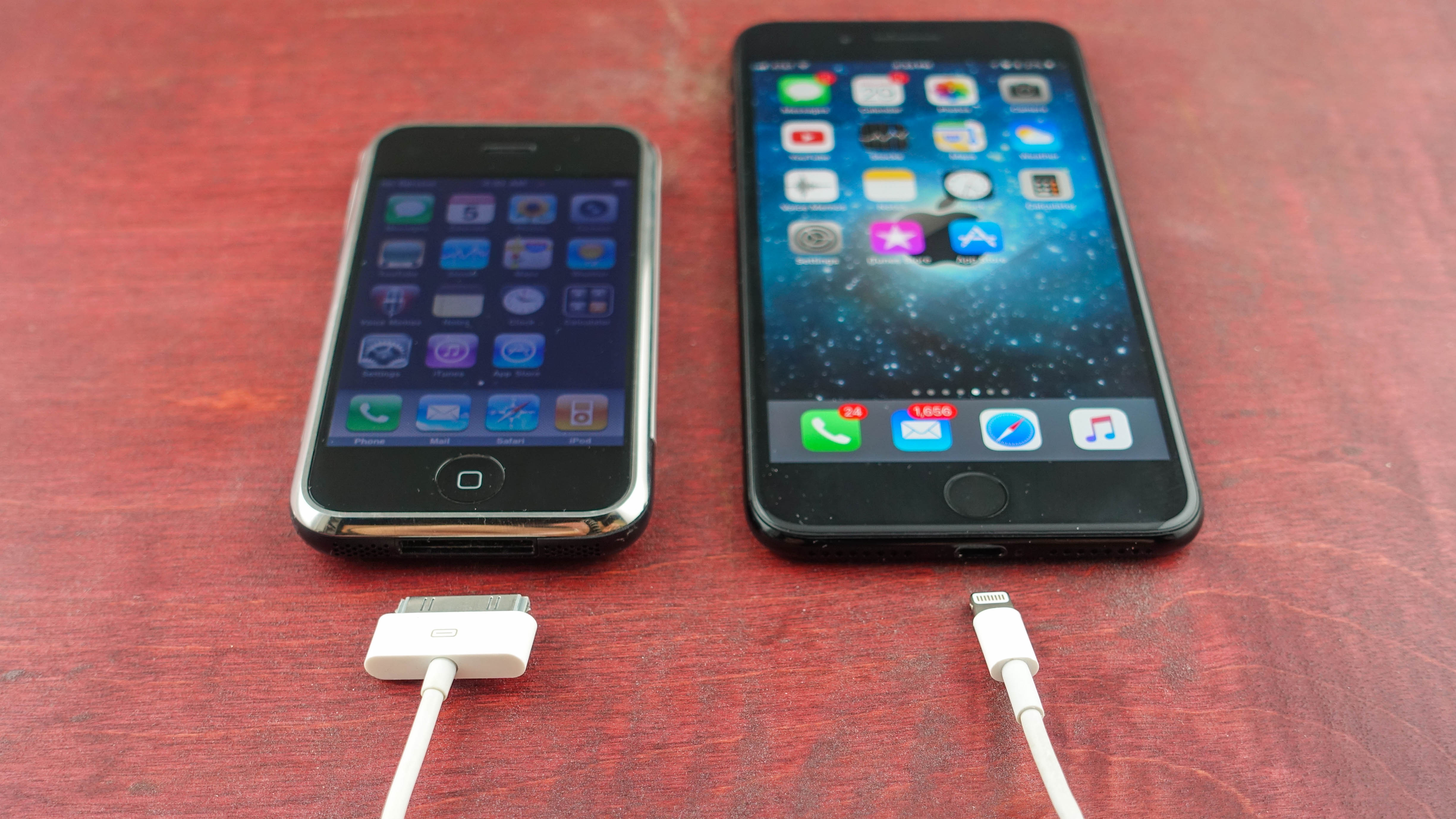
Battery life and charging
The iPhone 1 and iPhone 7 Plus are very different when it comes to the battery and charging methods. The iPhone 1 has a smaller 1,400mAh battery size, but s bigger 30-pin dock charger, while the iPhone 7 Plus provides a hefty 2,900mAh battery and uses the much slimmer Lightning Cable.
What's crazy? The iPhone 1 had a bigger battery size than the iPhone 3G and iPhone 3GS. The official specs said those newer phones lasted longer, with ,pre talk time and longer standby time, but the additions of 3G radios and Bluetooth ate up battery life and actually made the phones thicker (and therefore the battery sizes were smaller compared to the iPhone 1).
Now? The true iPhone battery life revolution didn't happen until the iPhone 4 and again when the significantly bigger iPhone 6 Plus launched, comfortably lasting all day while doing more tasks. Batteries got bigger, internal specs became more efficient and refined software taxed the battery less. The iPhone 5 introduced controversy when it switched everyone over to reversible Lightning cables (care to go back?) and now the iPhone 7 Plus gives us our most efficient battery of any iPhone. What's next? Rumors point to iPhone 8 getting wireless charger, something we like about our iPhone Mophie case, but wouldn't mind having out of the box.
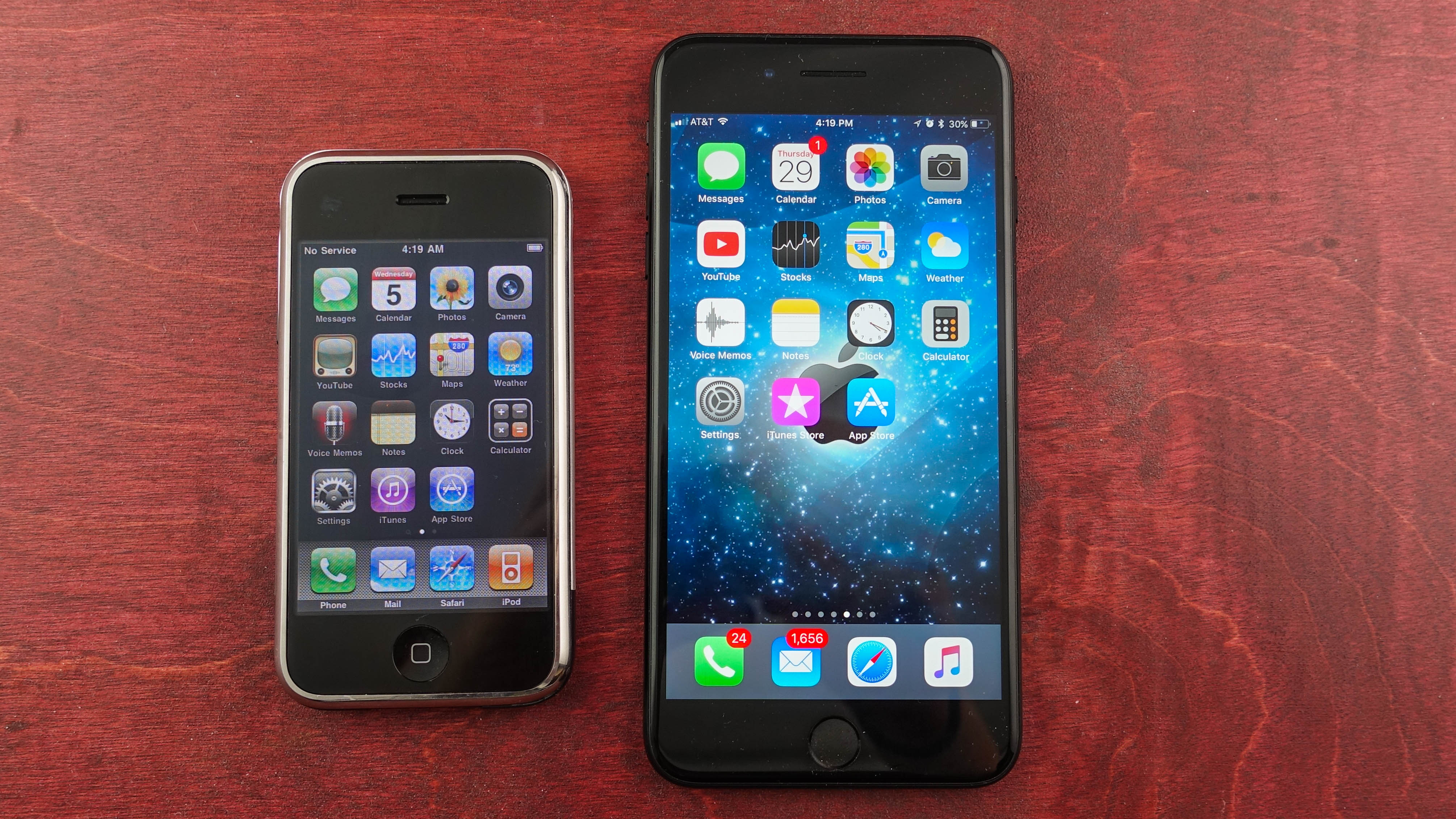
The next 10 years
The iPhone has dramatically changed over the course of ten years.
Don't think so? Apps weren't a thing (outside of the preinstalled kind), selfies weren't a thing and listening to music via Bluetooth headphones (or now AirPods) on your daily commute was annoyingly not a thing. These are all smartphone features we take for granted nowadays.
What will the iPhone look like in another 10 years? The popular theory is that it won't be a phone. The advent of augmented reality may just give us something that's closer to this sci-fi future:
I think that's more like 20 years away. In the next 10 years – if I had to make an iPhone prediction – I suspect the iPad mini will come back. Follow me on this: if the new iPhone does indeed get a glass back, and if companies follow through on prototyping flexible phones, and if current phones continue to get thinner and thinner, we could have a phone – with a glass display on both sides – thin enough to be folded over (yes, a flip phone), one could morph into a small tablet. It'd be ideal for watching YouTube videos on a train or plane, but be sleek enough to fold up and fit into your pocket. Yes, the near future phone may just be the iPad mini, or if it folds up 16 more times, the Apple Watch.
- Fact vs fiction: Apple's iPhone 8 rumors explained
